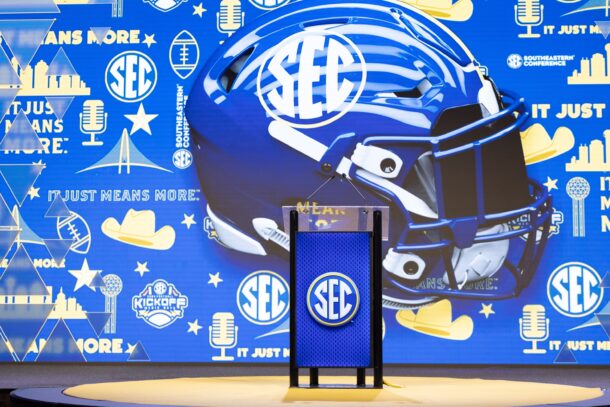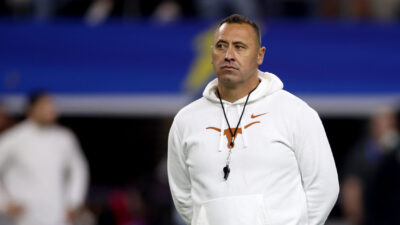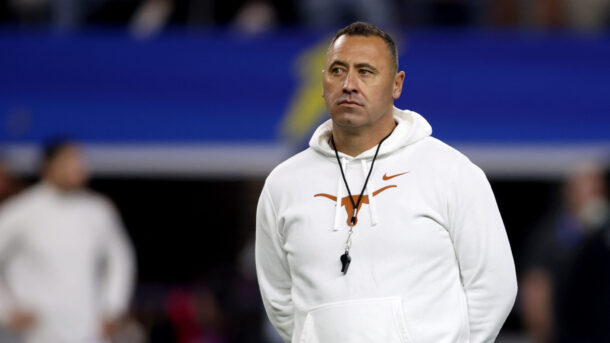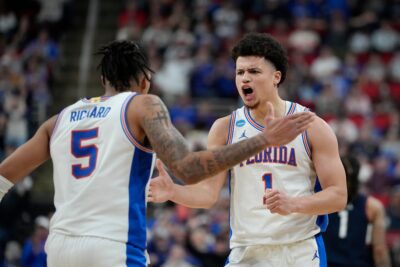Ad Disclosure
The NCAA did not begin recording defensive statistics until 2000, meaning many of the best defensive linemen before that time have been under-appreciated due to the lack metrics by which to measure their success.
For a number of players who played in the later decades of the 20th century, their career statistics have been retroactively tallied, but for some players much further removed from the turn of the millennium, their numbers may never be recovered. A good example is former Alabama linebacker Derrick Thomas, who is credited with 52 sacks for his career in the 1980s.
So often a lineman’s worth is measured by sacks, tackles for loss or pressures in the backfield. And those are all worthy means by which to measure a defensive lineman. However, what about the all-time great linemen who don’t have the benefit of sack numbers to enhance their legacies?
The following is an effort to recognize those players who may have been lost in the pre-sack shuffle in the all-time history books. These are some of the SEC’s best defensive linemen before the sack era in football (listed alphabetically):
Lynn Bomar, Vanderbilt (1921-24): Bomar was the Commodores’ star during the glory days of its football program. In four seasons at Vandy, Bomar’s teams lost a total of five games among the 35 played in that time, and they won three straight Southern Conference titles with Bomar starring on the offensive and defensive lines. He was a two-time All-American, and the player nicknamed “The Blond Bear” played with a serious edge. His signature piece of trash talk was the line “I-hope-you-don’t-like-it,” which in those days was pretty severe. He would go on to be inducted into the College Football Hall of Fame after his career came to a close.
Steve DeLong, Tennessee (1961-64): DeLong played both defensive end and defensive tackle for the Tennessee Volunteers in the early 1960s, serving as one of the most complete defensive linemen to play in the SEC to that point in history. As a senior he was named an All-American and the winner of the 1964 Outland Trophy, given to the best interior lineman in college football. He went on to be a top-10 pick in the 1965 NFL Draft and was eventually inducted into the College Football Hall of Fame.
Bob Gain, Kentucky (1947-50): Gain was another two-way star for the Kentucky Wildcats and their coach at the time, a guy named Paul “Bear” Bryant (perhaps you’ve heard of him). Gain played offensive tackle and defensive end, and served as team captain of the 1950 Wildcats, which won one of the program’s two SEC championships (the other came in 1976). He won the 1950 Outland Trophy, was named the 1950 SEC Lineman of the Year and was named an All-American in 1949 and 1950, earning consensus All-American honors in ’50. He went on to be a top-five pick in the NFL Draft, and he lasted in the league for 13 seasons. He’s now an inductee in the College Football Hall of Fame.
Barney Poole, Ole Miss (1942-48): Poole was a three-time All-American in seven collegiate seasons at three schools, the result of strange circumstances and since-extinct eligibility rules that had to do with World War II. He was a two-way lineman who earned All-America honors at Army in 1944 and again at Ole Miss in 1947 and ’48, and he was inducted into the College Football Hall of Fame in 1974. Poole’s career was among the most unique in the history of college football, but that is only furthered by his unmatched talent in the trenches during that era.
Zeke Smith, Auburn (1955-58): Smith was yet another two-way player starring in the SEC in 1950s, and like so many others on this list he was once an All-American and the winner of the 1958 Outland Trophy. He’s a College Football Hall of Fame inductee, but perhaps his greatest achievement is finding his face on a banner outside Jordan-Hare Stadium alongside some of the greatest former Tigers of all-time: Bo Jackson, Pat Sullivan, Tracy Rocker and Carlos Rogers.
Bill Stanfill, Georgia (1966-68): Stanfill played defensive tackle at Georgia for three seasons, and he earned all-conference honors all three years to indicate his brilliance despite the lack of stats for defensive linemen at the time. He was a two-time consensus All-American and a two-time conference champion, and in 34 games during those three seasons his teams lost a total of only six times. He’s an inductee in the College Football Hall of Fame and the Florida-Georgia Hall of Fame, and he went on to be a first-round pick in the NFL Draft, where he started 91 games in his career.
Bob Suffridge, Tennessee (1938-40): Suffridge was one of famed head coach General Robert Neyland’s greatest players during his more than 20 years as the head coach at Tennessee. In three seasons in the lineup, Suffridge earned All-America honors three times and won the Knute Rockney Memorial Trophy — given at the time to the nation’s top linemen — before moving on to professional football. Tennessee never lost a regular season game during Suffridge’s three years with the team, and in 1939 the Vols did not allow a single point the entire regular season. Suffridge was a member of the 1938 national champions, Neyland’s first career title, and he was inducted into the College Football Hall of Fame in 1961.
A former newspaper reporter who has roamed the southeastern United States for years covering football and eating way too many barbecue ribs, if there is such a thing.




